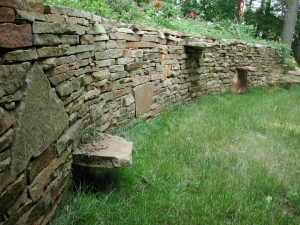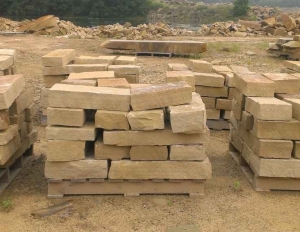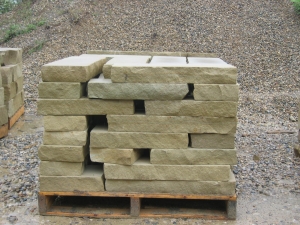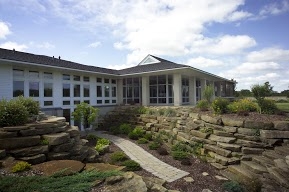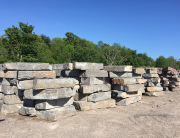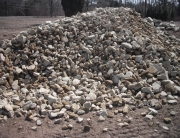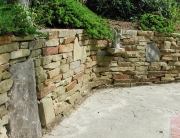Natural stone retaining walls are an attractive and functional addition to any landscape design. Whether you have a naturally sloped property, or are contouring your landscape to create visual interest, retaining walls will create a clear delineation between property levels, can be used to create flat, usable terraces and will help to prevent erosion. Last but not least, stone retaining walls by Napoleon Stone look great!
Napoleon Stone produces several types of stone retaining walls at our quarries in Southeast Michigan. All our stone walls work and look great in your backyard, along a lakeshore and by your pool. The best stone retaining wall choice for you will depend on the application and desired finished look you seek. A great first step for your stone retaining wall project is for you to decide what is going to be the purpose of your wall. If you need to retain soil more than 3 feet high, a natural stone, dry stacked wall would not be your first option. However, if you are simply holding back soil in a small garden or along a path, a dry stacked natural stone wall would be a perfect solution for your project.
Natural Wallstone: Napoleon Stone’s natural or irregular wallstone consists of smaller pieces of natural stone with a smooth top and bottom, one straight edge and consistent thicknesses. Most importantly, all of our natural stone retaining wall products are easy to handstack. As a result, Napoleon Stone’s natural wallstone products are a great option for DIY’s and weekend warriors. They are also a better “green” retaining wall alternative when compared to man-made/concrete retaining walls. Natural wallstone requires no special equipment to install but it is more labor intensive than split or sawn drywall and outcropping wallstone. Most natural stone retaining walls are are usually dry-stacked in place rather than mortared. Napoleon Stone produces three types of Natural Wallstone:
- Assorted Wall Stone – 2″-5″ thick pieces of landscape stone at random lengths & depths
- Thin Wall Stone – 1″-2″ thick pieces of landscape stone at random lengths & depths
- Heavy Wall Stone – 3″-5″ thick pieces of landscape stone at random lengths & depths
Split Drywall: Split or snapped drywall wallstone is produced in standard 8” bed depths but also available in other depths upon request. All split drywall is approximately 3″-5″ in thickness with random lengths. This type of stone is sometimes referred to as drywall or drystack wall due the absence of mortar. Napoleon Stone’s split drywall is a very popular option for smaller walls as it is economical, relatively easy to install by yourself and requires no special equipment for installation. This stone has limitations on wall height but can be terraced for larger slopes. The wallstone colors are tan and and buff, If you are looking for a seamless transition between your home’s exterior stone veneer and landscape walls, split drywall is your best choice.
Sawn Drywall: Sawn drywall wallstone is similar to the split drywall outlined above except that the stone is sawn on the top and bottom to either a 3″ or 6″ thickness. Other thicknesses are available upon request. The sawn drywall gives a cleaner and more uniform look then the split drywall and the other hand stack retaining wall options produced by Napoleon Stone.
Outcropping: These are larger natural pieces of retaining wall stone with thicknesses from 8″-20″ at random depths and lengths. Outcroppings are a very stable/strong stone due to their large sizes and are recommended for use on larger walls (individual pieces often weigh over 500 lbs). The stones can also be used as accents in any outdoor landscape environment. They too are a great green option, but they do require larger equipment for installation. For wall heights greater than 3 feet, outcropping is a great option. Our outcropping can be used for stone retaining walls, break walls, bridges over small ponds, break-walls, natural benches, stone seats for ampitheaters, erosion control, sitting stones and accent stone; the possibilities are virtually endless.

